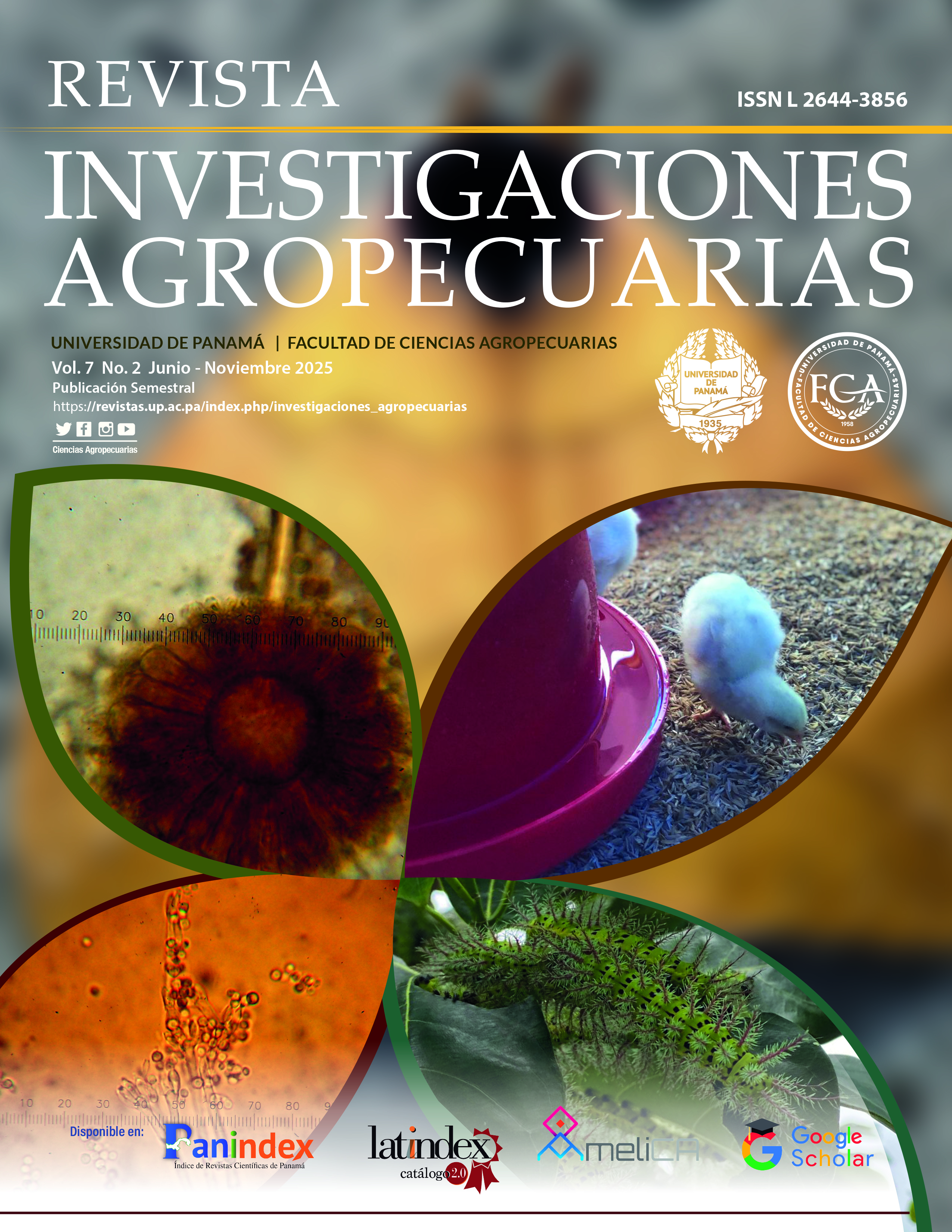

Copyright (c) 2025 Journal of Agricultural Research

This work is licensed under a Creative Commons Attribution-NonCommercial-ShareAlike 4.0 International License.
Fungal infections are one of the most important emerging problems for the health of bee colonies. To identify the fungal species, present in Apis mellifera hives, and thus recognize if they constitute a problem in the apiaries of the region, two fungal samples were taken in three randomly selected hives, belonging to three apiaries in the province of Chiriqui (San Lorenzo, Los Algarrobos and Potrerillos), during the rainy and dry seasons. The fungi were isolated from the following sites: wall and bottom of the hives (PF), worker larvae (LO), worker pupae (PO), drone larvae (LZ), and drone pupae (PZ). This study will serve as a baseline for identifying fungi present in Apis mellifera hives in Panama. The fungal species identified in the hives were: Aspergillus terreus, Aspergillus flavus, Aspergillus niger, Aspergillus caespitosus, Penicillium citrinum, Penicillium decumbens, Penicillium chrysogenum, Penicillium comunne, Fusarium oxisporum, Fusarium chlamydosporum, Cladosporium herbarum, Cladosporium cladosporioides, Chrysonilia sitophila, Curvularia lunata, Rhizopus stolonifer, Beauveria bassiana and Paecylomices javanicus. B. bassiana and P. javanicus were considered important entomopathogens. The species varied by season and hive conditions, registering the genera Aspergillus as the most abundant and frequent in the three sampled sites. The fungal species diversity indices of Shannon-Wiener were San Lorenzo 'H= 1.69, Los Algarrobos 'H= 2.18, and Potrerillos 'H= 2.40. The sampled apiaries showed acceptable infections by fungi that come mainly from the host plants that are visited by honeybees.